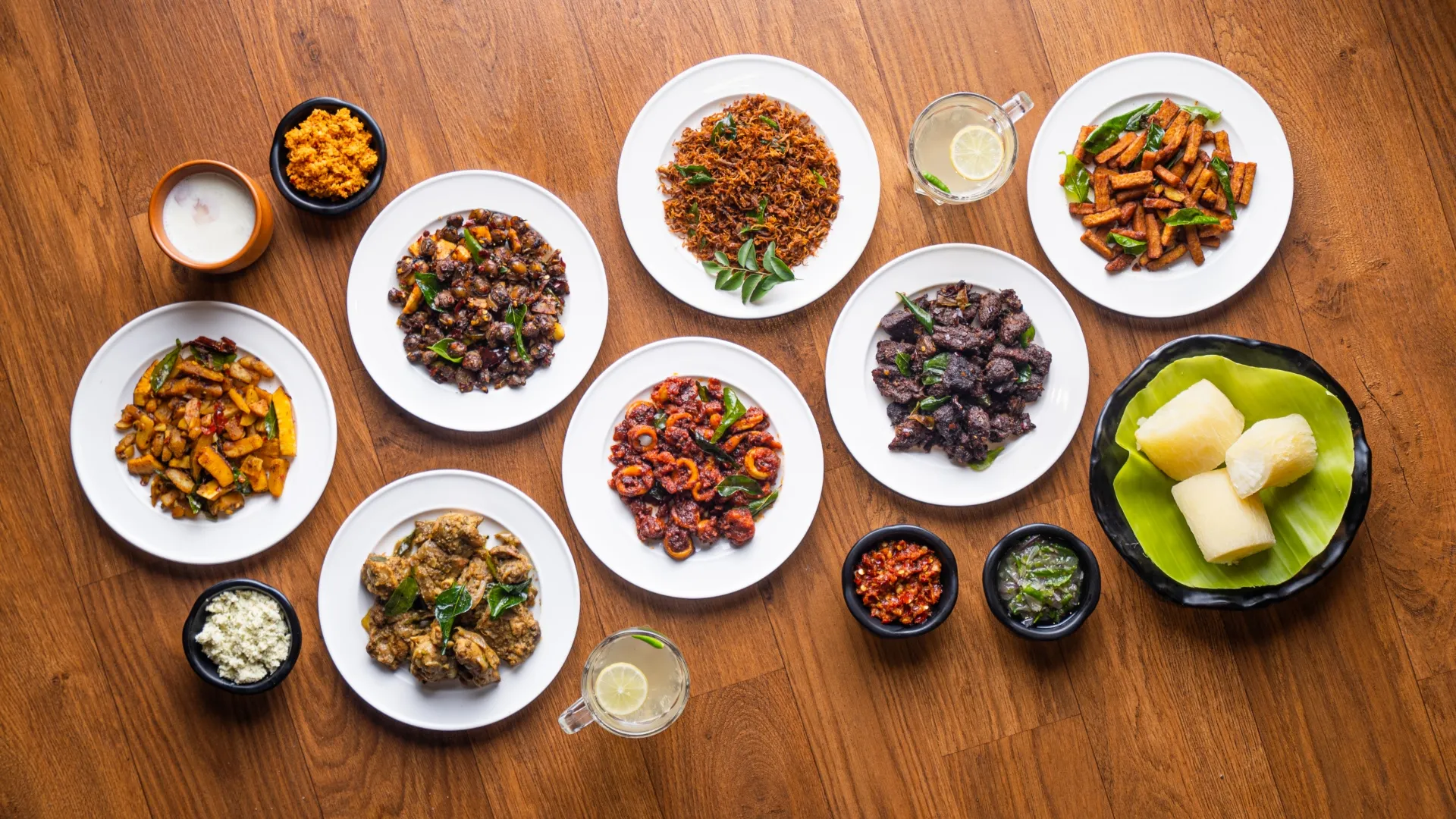The world of food is constantly evolving, with new trends, flavors, and innovations shaping the way we eat. From the rise of plant-based diets to the increasing focus on sustainability, the culinary landscape of 2025 promises to be exciting and dynamic. In this article, we’ll explore the key food trends that are expected to dominate the culinary world in 2025, from new ingredients and techniques to the latest dining experiences.
1. Plant-Based Everything
Beyond Meat and Dairy
Plant-based eating has been one of the most significant food trends of the last decade, and it shows no signs of slowing down in 2025. As more people turn to plant-based diets for health, ethical, and environmental reasons, the demand for innovative plant-based products is growing. In 2025, we can expect to see even more variety and sophistication in plant-based foods, with advancements in plant-based meats, dairy alternatives, and more.
Plant-Based Meats: Companies like Beyond Meat and Impossible Foods have already made strides in creating plant-based meat alternatives, but by 2025, we can expect even more innovation in this category. Expect more realistic textures and flavors in plant-based meats, such as plant-based steaks, lamb, and even seafood, as new techniques in food science and technology continue to improve.
Dairy Alternatives: The dairy aisle will continue to evolve, with innovations in plant-based milk, cheeses, and yogurts. By 2025, it’s likely that new plant-based cheeses will be developed that rival the taste and texture of dairy-based cheeses, thanks to advancements in fermentation and plant protein technology.
Mushrooms as the Next Superfood
Mushrooms have gained popularity in recent years as a plant-based protein source, and by 2025, they will likely take center stage in the plant-based movement. From lion’s mane and shiitake to oyster and portobello, mushrooms are versatile, rich in umami flavor, and a great source of nutrients. Expect to see mushrooms featured more prominently in plant-based meat alternatives, snacks, and even beverages.
2. Sustainability in Every Bite
Regenerative Agriculture and Ethical Sourcing
As sustainability becomes an increasingly important issue for consumers, regenerative agriculture is likely to be a key theme in the food industry by 2025. Regenerative farming goes beyond traditional organic farming by focusing on soil health, biodiversity, and carbon sequestration. By choosing ingredients grown using regenerative practices, consumers can help reduce the environmental impact of food production.
Look for restaurants and brands that focus on ethically sourced ingredients, including meat, seafood, and produce. Sustainability will be at the heart of menus, with more emphasis on locally sourced ingredients and eco-friendly packaging, as well as efforts to reduce food waste.
Lab-Grown Meat
In 2025, we may see lab-grown meat (also known as cultured meat) become more mainstream. This form of meat is created by cultivating animal cells in a lab, offering a sustainable alternative to traditional animal agriculture. With advancements in biotechnology, lab-grown meat is expected to become more affordable and accessible to consumers, offering a solution to the environmental and ethical concerns surrounding conventional meat production.
3. Global Fusion: A Taste of the World
International Flavors and Regional Cuisines
The world of food is becoming more globalized, and as travel and culinary exploration continue to thrive, global fusion cuisine will take on new forms. In 2025, expect to see even more influences from lesser-known regional cuisines, as chefs and home cooks experiment with flavors from places like Southeast Asia, Africa, and Latin America.
Middle Eastern and North African Flavors: Dishes like shakshuka, falafel, and couscous are already popular, but by 2025, these cuisines will continue to grow in influence, with new interpretations of traditional dishes and a wider variety of ingredients like tahini, sumac, and za’atar.
African Cuisine: African cuisine will gain more recognition in the culinary world, with dishes from West Africa, Ethiopia, and beyond making their way to international menus. Spices like berbere and harissa, as well as ingredients like teff and fonio, will be highlighted in both home kitchens and restaurants.
Latin American Fusion: Latin American food, especially from countries like Mexico, Peru, and Brazil, is already incredibly popular. Expect to see more fusion dishes that combine the bold flavors of Latin American cuisine with other culinary traditions, creating exciting and innovative new dishes.
Fermented and Pickled Foods
Fermentation is set to remain a key trend in 2025, as more chefs and home cooks experiment with fermented foods and pickling techniques. Not only do these foods offer bold, tangy flavors, but they also provide numerous health benefits due to the probiotics they contain.
Look for fermented vegetables, pickled fruits, and fermented beverages like kombucha and kimchi on menus and in grocery stores. These foods will continue to gain popularity as people become more aware of the gut-health benefits associated with fermented ingredients.
4. Technology in the Kitchen: The Future of Cooking
AI and Robotics in Food Production
By 2025, we can expect technology to continue reshaping the way we cook and consume food. Artificial intelligence (AI) will play a larger role in personalized meal planning and recipe development. Apps and AI-powered platforms may help people create meals based on their dietary preferences, allergies, or nutritional needs.
In commercial kitchens, robotic cooking assistants will become more prevalent. These machines will be able to chop, stir, and cook food with incredible precision, allowing chefs to focus on more complex tasks. Restaurants may use robots to prepare simple, repetitive tasks like making pizza, burgers, or sushi, while also improving efficiency and reducing food waste.
3D Printed Food
The technology of 3D food printing has already been explored in the culinary world, but by 2025, this technology could be more mainstream. 3D printers can create intricate food designs, from gourmet meals to custom desserts, using ingredients like chocolate, dough, and plant-based proteins. This could also lead to more sustainable food production, as 3D printers are able to use alternative ingredients that may be more eco-friendly or nutritious.
5. Functional Foods: Eating for Wellness
Adaptogens and Superfoods
In 2025, the trend of eating for wellness will continue to gain momentum, with people looking for foods that not only taste good but also offer health benefits. Adaptogens—herbs and plants that help the body manage stress and balance hormones—will become increasingly popular, with ingredients like ashwagandha, rhodiola, and maca root incorporated into everything from smoothies to snacks.
Superfoods, such as turmeric, spirulina, and acai, will remain in demand for their potential health benefits, with new superfoods emerging from regions like Africa and Asia. These foods will be marketed as solutions for improved energy, digestion, and overall wellness.
Personalized Nutrition
Personalized nutrition, which tailors diet recommendations based on individual DNA, lifestyle, and health data, is likely to grow in popularity by 2025. With the rise of health apps and genetic testing, people will have access to personalized meal plans that help optimize their health and wellness.
Expect to see customized meal kits and supplements that cater to individual needs, whether it’s for better sleep, improved digestion, or enhanced athletic performance.
6. Sweet Alternatives: The Rise of Natural Sweeteners
As consumers become more health-conscious, the demand for natural sweeteners and sugar alternatives will continue to grow. In 2025, we’ll see more innovative ways to satisfy our sweet tooth without the negative health effects of traditional sugar.
Stevia, monk fruit, and date syrup are some of the most popular natural sweeteners already gaining traction, and by 2025, expect to see even more variety and sophistication in sugar alternatives. These sweeteners will be incorporated into everything from beverages to baked goods, offering a healthier way to indulge without compromising on taste.
Conclusion: The Culinary Future Is Bold and Diverse
The food trends of 2025 promise a dynamic, innovative, and sustainable future for the culinary world. As plant-based diets continue to grow in popularity, sustainability becomes more important, and new technologies and health-conscious ingredients take center stage, the way we eat will continue to evolve. From global fusion dishes and fermented foods to AI-powered kitchens and personalized nutrition, the culinary world in 2025 will be an exciting, diverse, and flavor-packed place.
Whether you’re a foodie looking to explore the latest trends or simply someone trying to eat more healthily and sustainably, the future of food offers something for everyone. The culinary world in 2025 is all about embracing new ideas, enhancing well-being, and making a positive impact on the planet.
Key Takeaways
- Plant-based products will continue to rise in popularity, with even more innovation in plant-based meats and dairy alternatives.
- Sustainability will play a critical role in food production, with an emphasis on regenerative agriculture and ethically sourced ingredients.
- Global fusion and regional cuisines will continue to dominate, with dishes from lesser-known cultures gaining prominence.
- Technology in the kitchen, including AI, robotic cooking, and 3D food printing, will revolutionize how food is produced and consumed.
- Functional foods, such as those containing adaptogens and superfoods, will be a growing trend as people seek food that supports health and wellness.

